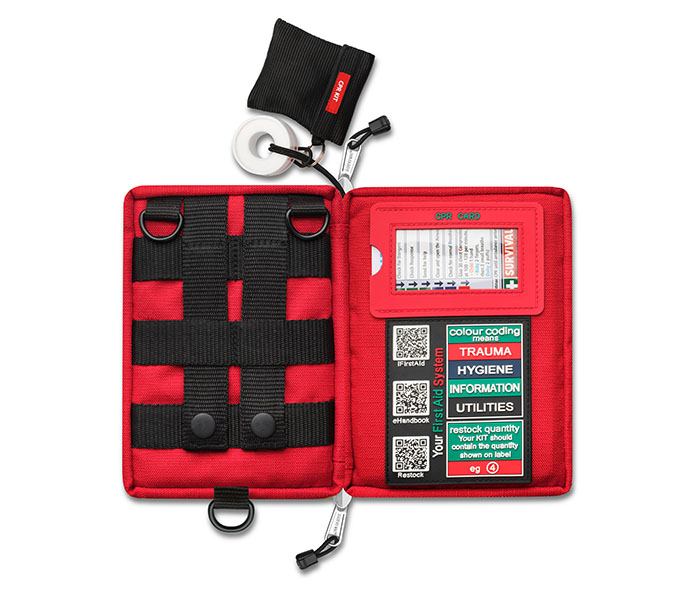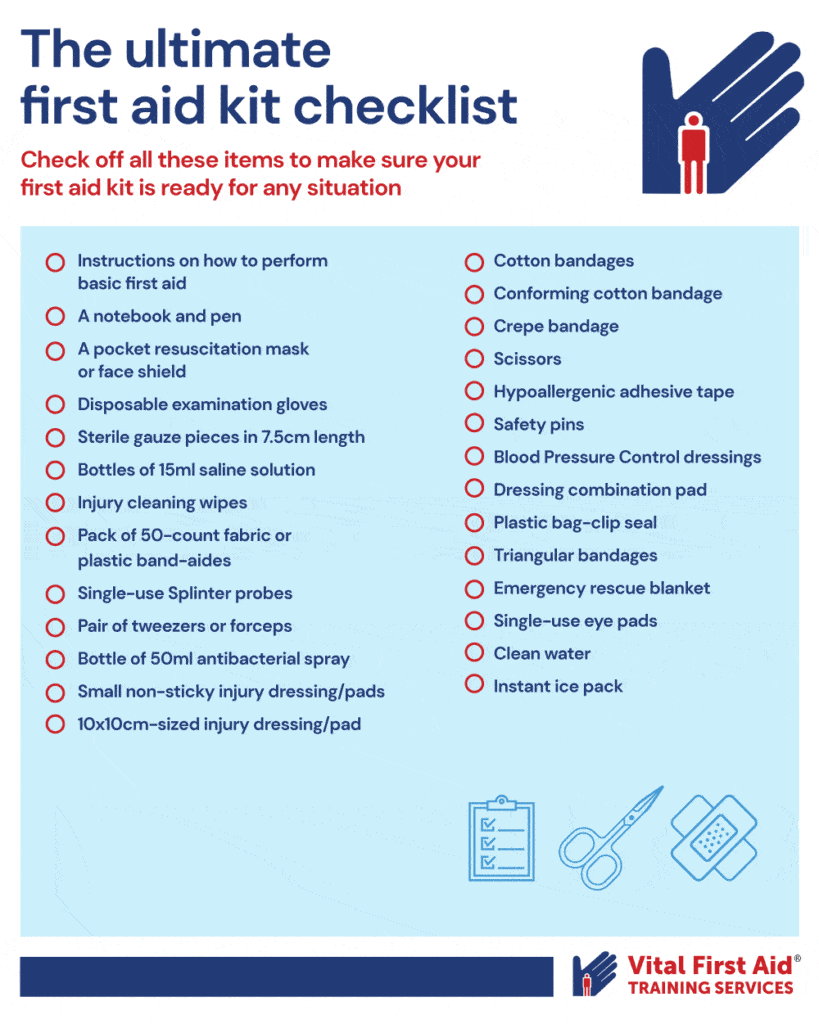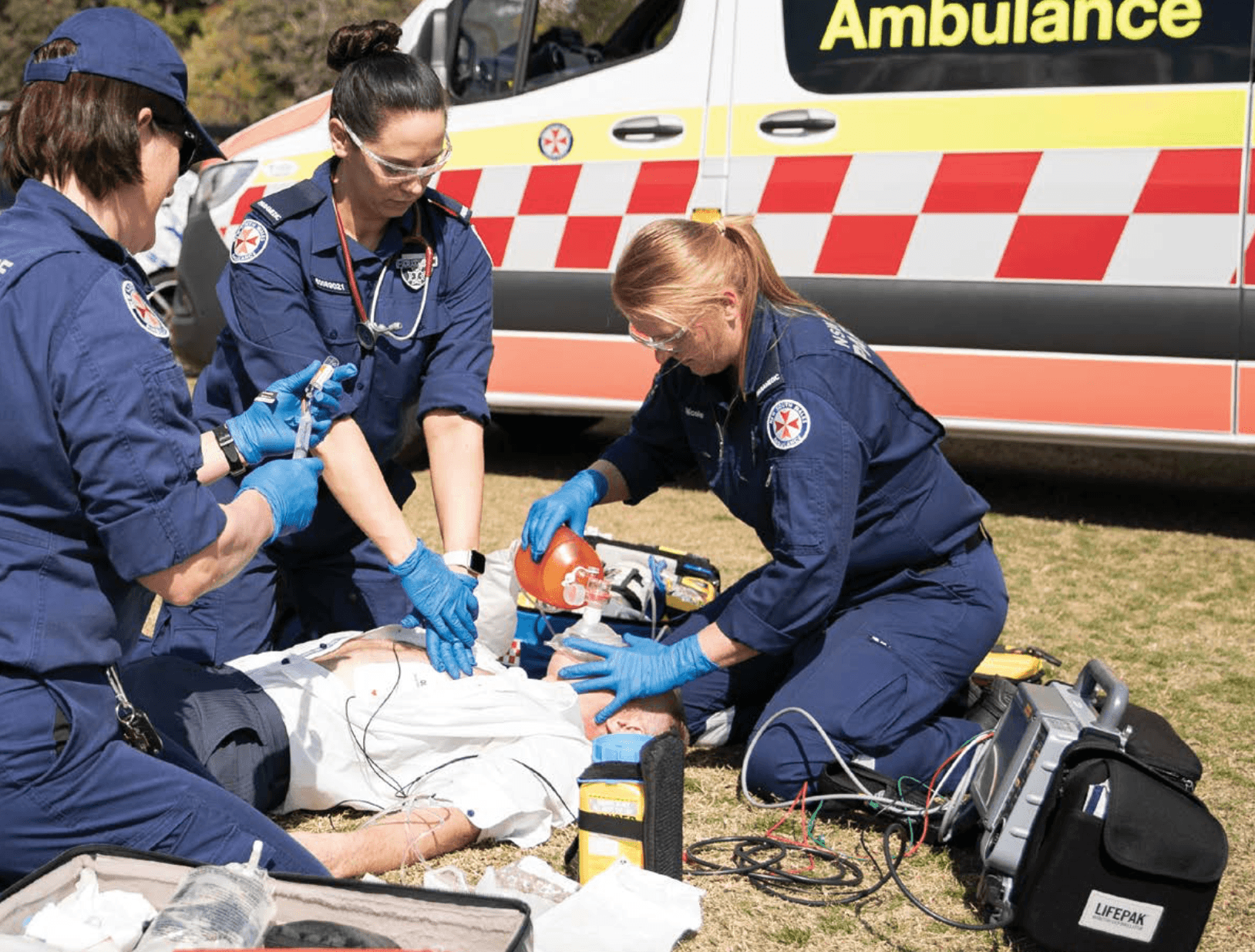First-aid kits scream, “Calm down, breathe, relax, I got this, I’m prepared, you can count on me …”
Whip one out in a crisis and you immediately take charge in an emergency situation.
And your quick-thinking and fast action could save a life.
First-aid kits are not a luxury item, they’re a necessity – in the home and at work.
Our homes are covered with smoke alarms, but are you prepared for a serious burn, or bite, nosebleed, sprain or fracture from a fall? Would you know what to do in an emergency?
Outside of the home, Safe Work Australia requires all workers be able to access a first-aid kit in their workplace.
What a full first-aid kit should contain
- Instructions on how to perform basic first aid, including CPR
- A notebook and pen
- A pocket resuscitation mask, or face shield
- A minimum of 5 pairs of disposable examination gloves
- Gauze pieces in 7.5cm length, sterile (three per pack, and a minimum of five packs)
- Eight bottles of saline solution (15ml)
- Ten injury cleaning wipes
- One pack of 50-count fabric or plastic band aides (or other form of dressing strips)
- Ten single use Splinter probes
- One pair of tweezers or forceps
- One bottle of 50ml antibacterial spray or liquid
- Six small non-sticky injury dressing/pad (sized 5x5cm)
- One 10x10cm-sized injury pad/dressing
- Three cotton bandages (5cm-sized)
- Three 7.5cm conforming cotton bandage
- One 10cm crepe bandage
- One pair of scissors
- One roll of hypoallergenic adhesive tape
- One pack of six safety pins
- One medium Blood Pressure Control dressing No.14
- One large Blood Pressure Control dressing No.15
- One dressing combination pad, sized 9x20cm
- One plastic bag-clip seal
- Two triangular bandages
- One emergency rescue blanket
- Four single-use eye pads
- Access to 20 minutes of clean running water or (if this is not available hydro gel)
- Instant ice pack
Containing all the components you need to be workplace compliant, this kit will have you covered for any workplace emergency.
An organised and properly stocked first aid kit means being prepared – you could help you save a life.
Up to 15% of motor vehicle accident deaths could be prevented if first aid is administered before paramedics arrive on the scene.
The auto first-aid kit above is “the best first-aid kit for cars anywhere in Australia“.
Sadly, fewer than five per cent of people in Australia are trained in first aid, one of the lowest rates in the world, according to the Red Cross.
Doing a first aid course is recommended to give you the knowledge and skills to provide capable first aid assistance.
Other alarming statistics about first aid
- Only 48 per cent of Australian workplaces offer accredited first aid training to their employees
- Up to 150,000 people in the UK die each year in situations where first aid could make a difference
- Only 9% of UK parents are confident and willing to perform first aid on their children
First-aid kits are even available for specialist situations, like these snake bite survival kits:
First-Aid Kits Resources:
- First Aid Basics: Complete A to Z of Injuries and Illnesses
- Vital Advice on Treating Australian Snake Bites
- Hypoglycemia – first aid management
- First-Aid Kits At Work
- First-Aid Kits for tradies
- Can I be sued if I perform first aid?
- How to perform CPR during a pandemic
Buy one of the first-aid kits at Vital First Aid Training Services now for peace of mind in an emergency.





